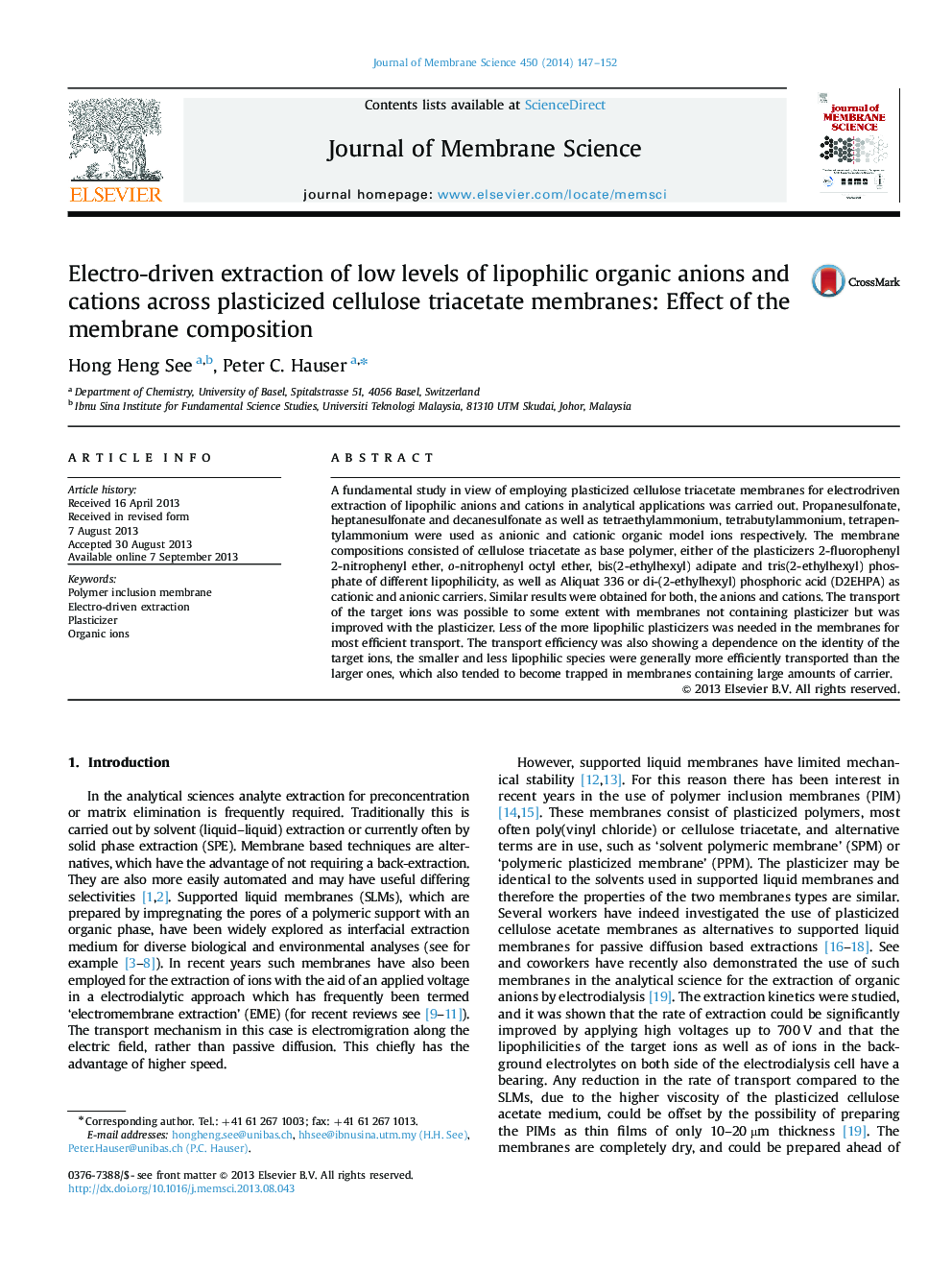| Article ID | Journal | Published Year | Pages | File Type |
|---|---|---|---|---|
| 633834 | Journal of Membrane Science | 2014 | 6 Pages |
•Lipophilic organic cations and anions were successfully extracted at low levels across plasticized cellulose acetate membranes.•The efficiency could be optimized by content and type of plasticizer.•Ions of low lipophilicity require a high carrier content while ions of high lipophilicity are extracted best without carrier.
A fundamental study in view of employing plasticized cellulose triacetate membranes for electrodriven extraction of lipophilic anions and cations in analytical applications was carried out. Propanesulfonate, heptanesulfonate and decanesulfonate as well as tetraethylammonium, tetrabutylammonium, tetrapentylammonium were used as anionic and cationic organic model ions respectively. The membrane compositions consisted of cellulose triacetate as base polymer, either of the plasticizers 2-fluorophenyl 2-nitrophenyl ether, o-nitrophenyl octyl ether, bis(2-ethylhexyl) adipate and tris(2-ethylhexyl) phosphate of different lipophilicity, as well as Aliquat 336 or di-(2-ethylhexyl) phosphoric acid (D2EHPA) as cationic and anionic carriers. Similar results were obtained for both, the anions and cations. The transport of the target ions was possible to some extent with membranes not containing plasticizer but was improved with the plasticizer. Less of the more lipophilic plasticizers was needed in the membranes for most efficient transport. The transport efficiency was also showing a dependence on the identity of the target ions, the smaller and less lipophilic species were generally more efficiently transported than the larger ones, which also tended to become trapped in membranes containing large amounts of carrier.
